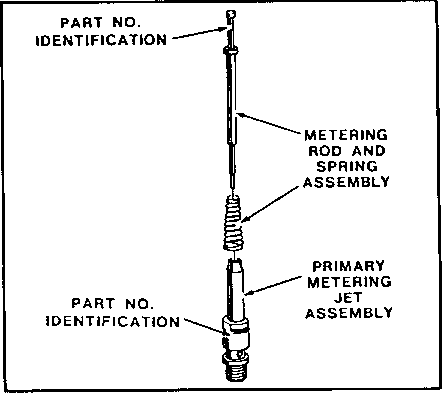CODE 30 MAY BE CAUSED BY MISADJUSTED ISC MOTOR

QSI (QUICK SERVICE INFORMATION) ITEMS - GROUP 6C ENGINE FUEL SYSTEMS
A number of items of current service interest are provided below:
GR.6C DFI Throttle Body TPS Mounting Screw Removal
The mounting screws for the TPS on DFI throttle bodies are welded as a tamper resistant measure. In order to loosen or remove the screws, the throttle body must be removed and the welds drilled out through the bottom of the throttle body as shown on page 6C-45 of the 1981 Service Information Manual.
GR.6C V-6 CCC TPS Adjustment Spec. .56 Volts
The TPS adjustment spec. for 1981 V-6 CCC equipped vehicles per the 1981 Preliminary Service Manual is incorrect at .14 volts (refer to Page 6C-12). It should be .56 volts and is correct in the 1981 final Service Information Manual.
GR.6C DFI Code 30 May Be Caused By Misadjusted ISC Motor
Early field experience indicates that the most common cause for setting a Code 30 on 1981 DFI engines is a misadjusted ISC motor. Misadjustment is also the cause of a "ratcheting" noise that may be heard (or felt in the accelerator pedal) when the key is turned to the "on" position. If after adjusting the TPS, minimum air rate and ISC, per Serviceman Bulletin 81-5, the condition persists, readjust the ISC motor to the high end of the idle speed specification (1700 RPM). See step 7 in ISC Motor Adjustment section, Serviceman Bulletin 81-5. Do not replace ISC motors when proper adjustments will correct the condition.
GR.6C Identification Of Primary Main Metering Rods and Jets On E4ME Model
Carburetors (1980 6.0 L. California Engine and 1981 V-6 Engine) The primary main metering rods and jets on E4ME model carburetors may be identified by the last two digits of the part number stamped at locations shown below. The numbers stamped on the rods and jets do not indicate rod size or jet size.

General Motors bulletins are intended for use by professional technicians, not a "do-it-yourselfer". They are written to inform those technicians of conditions that may occur on some vehicles, or to provide information that could assist in the proper service of a vehicle. Properly trained technicians have the equipment, tools, safety instructions and know-how to do a job properly and safely. If a condition is described, do not assume that the bulletin applies to your vehicle, or that your vehicle will have that condition. See a General Motors dealer servicing your brand of General Motors vehicle for information on whether your vehicle may benefit from the information.
